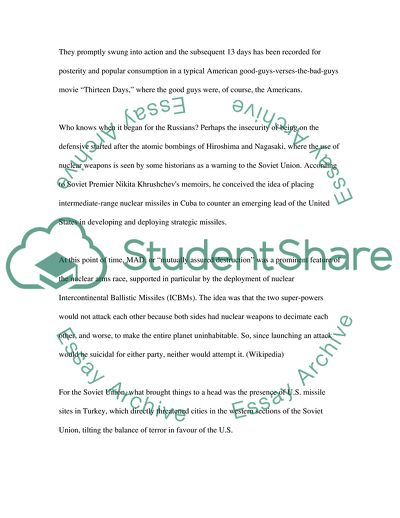Cite this document
(Identify and Evaluate how the Missile Crisis was perceived in the USA Coursework, n.d.)
Identify and Evaluate how the Missile Crisis was perceived in the USA Coursework. https://studentshare.org/history/1703096-identify-and-evaluate-how-the-missile-crisis-was-perceived-in-the-usa-and-cuba
Identify and Evaluate how the Missile Crisis was perceived in the USA Coursework. https://studentshare.org/history/1703096-identify-and-evaluate-how-the-missile-crisis-was-perceived-in-the-usa-and-cuba
(Identify and Evaluate How the Missile Crisis Was Perceived in the USA Coursework)
Identify and Evaluate How the Missile Crisis Was Perceived in the USA Coursework. https://studentshare.org/history/1703096-identify-and-evaluate-how-the-missile-crisis-was-perceived-in-the-usa-and-cuba.
Identify and Evaluate How the Missile Crisis Was Perceived in the USA Coursework. https://studentshare.org/history/1703096-identify-and-evaluate-how-the-missile-crisis-was-perceived-in-the-usa-and-cuba.
“Identify and Evaluate How the Missile Crisis Was Perceived in the USA Coursework”. https://studentshare.org/history/1703096-identify-and-evaluate-how-the-missile-crisis-was-perceived-in-the-usa-and-cuba.


